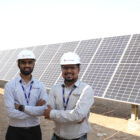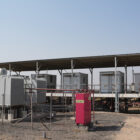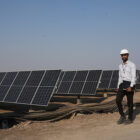Smart Grids and Their Influence on Solar Energy Distribution
The global shift toward renewable energy has propelled solar power to the forefront of the energy transformation. As solar installations—from rooftop arrays to utility-scale solar farms—multiply, managing their intermittent generation becomes increasingly complex. Enter the smart grid: a digitally enhanced power network designed to integrate, monitor, and optimize energy flows. For solar energy distribution, smart grids play a pivotal role, unlocking new efficiencies, reliability, and wider adoption.
1. Dynamic Load Balancing
Traditional grids operate on a unidirectional model: electricity flows from centralized plants to consumers. Solar disrupts this model by introducing bidirectional flow—power may flow back onto the grid from consumer rooftops. Smart grids manage this through real‑time load balancing using advanced sensors and analytics. These systems can forecast solar generation based on weather, match it to the local demand, and direct excess power to storage or other parts of the network. This capability minimizes waste and reduces strain on traditional grid assets.
2. Enhanced Grid Resilience
Weather variability can lead to spikes or drops in solar output. Smart grids bolster resilience by rapidly isolating disturbances and rerouting electricity as needed. When cloud cover sharply reduces solar feed-in, grid logic systems instantly tap storage reserves or ramp up other generation to maintain stability. This rapid response is essential to prevent voltage fluctuations or blackouts and to maintain consistent power quality.
3. Distributed Energy Resource Management Systems (DERMS)
At the heart of coordinating distributed solar assets is DERMS, which seamlessly integrates solar arrays, batteries, electric vehicles, and conventional generation. With smart-meter data and predictive algorithms, DERMS intelligently dispatches energy from the most cost-effective and sustainable sources. It can, for instance, store midday solar energy then discharge it during evening peaks—flattening demand curves and reducing utility costs. This optimization not only benefits utilities but also raises solar ROI for consumers.
4. Enabling Peer‑to‑Peer Solar Trading
Smart grids equipped with transactive energy platforms enable homeowners with rooftop solar to trade electricity directly with neighbors or the wider grid. Blockchains and secure smart‑contract mechanisms ensure transparent, time‑stamped transactions. This peer-to-peer trading fosters local energy resilience, empowers consumers, and encourages further adoption of residential solar systems by turning surplus power into income.
5. Advanced Monitoring and Predictive Maintenance
Smart sensors across the grid monitor performance in real time, tracking parameters like voltage, frequency, and current flow at solar nodes. Analytics platforms detect anomalies—such as underperforming panels or equipment faults—before they escalate. Predictive maintenance ensures continuous solar output, reduces downtime, and stretches component lifespans.
6. Regulatory and Environmental Impact
Smart grids make solar integration more cost-effective for utilities, accelerating its adoption under supportive regulations. Grid-aware solar distribution facilitates meeting emissions targets and national clean-energy goals. By reducing dependency on peaker plants and fossil-fueled generation, smart-grid–enhanced solar systems sharply reduce greenhouse-gas emissions and pollutants.
Conclusion
Smart grids are revolutionizing how solar energy is distributed, managed, and monetized. Through dynamic balancing, DERMS optimization, enhanced resiliency, peer-to-peer trading, and smart analytics, they’re enabling solar to move from niche to mainstream. By deploying modern grid architecture, utilities unlock the full potential of distributed solar—creating a more efficient, reliable, and sustainable energy future.















